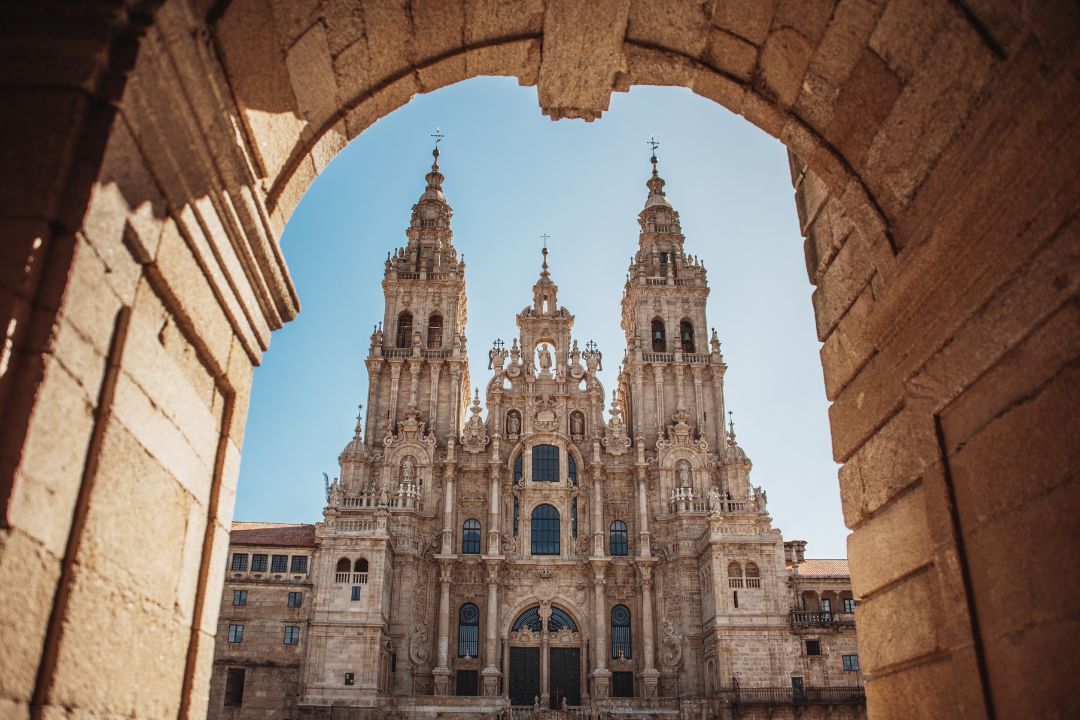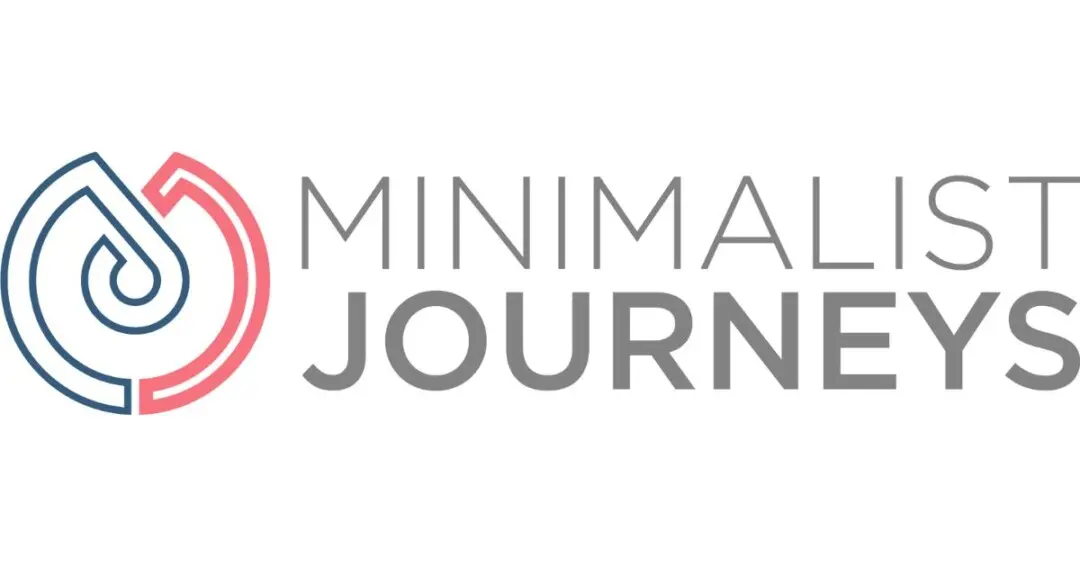This article may contain links to products and services we use and recommend. We may receive compensation when you click on links to those products. For more information, see our Disclosure Policy.
Whether you’ve walked the Camino de Santiago for the first (or the n-th) time, the feeling as you walk through the old streets of Santiago de Compostela and catch a glimpse of the towers of the Cathedral is indescribable. No matter how tired or hurting you are, no one can wipe that big smile off your face as you enter Praza do Obradoiro. YOU MADE IT.
After weeks of walking through the countryside, just putting one foot in front of the other, no one wants to go home and recommence their old lives. At least not immediately. There is so much to reflect upon. New friends to say goodbye to. A hurting body to take care of. It also takes time to readjust to normal life again.
If you have the time… don’t fly back immediately. Rest in Santiago for a few days, and be gentle with yourself. For guidance to those who seek it, here are a few tips on what to do (in/around Santiago) after your Camino to help you ease back into everyday life.
More Camino de Santiago articles
- Are you planning your first Camino de Santiago and have a gazillion questions about what to expect? Have a look at the lessons we learnt on our first Camino.
- You'd love to do the Camino but can't or don't want to average 30km/20miles a day? Learn here how to tailor the Camino Portugués to your needs.
- Would you like to walk the Camino de Santiago and wonder how much to budget? Check out how much it cost us to walk the Camino Portugués.
- You completed your Camino. Now what? Here are five tips to help you digest your experience and gently transition into life after your Camino.
Map of Accommodation, Points of Interest, Eateries and Transport
Below is a map of the recommended accommodations, points of interest, eateries, and transport terminals or stops mentioned in this article.
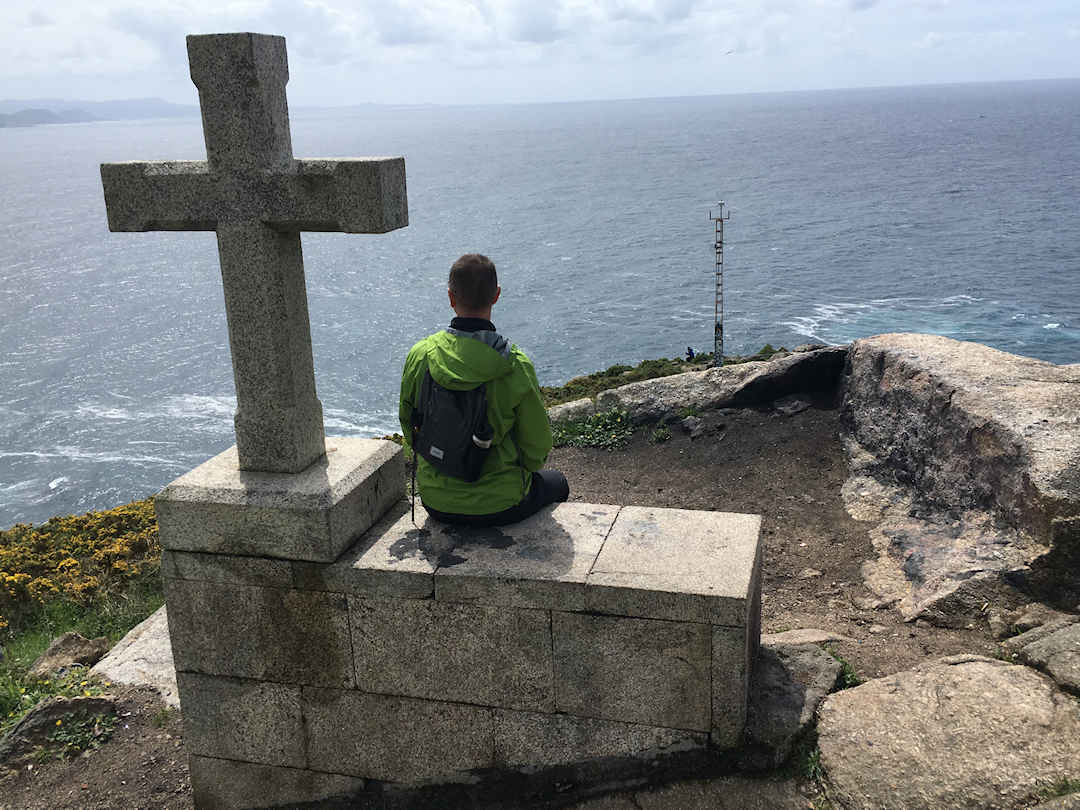
It can take time for your accomplishment to sink in. Reflect on it. Enjoy it. Cherish it.
Tip 1: Attend the Pilgrim’s Mass
Standing in front of the Cathdral of Santiago de Compostela, on the Praza do Obradoiro, is already a very special moment. But sitting inside the Cathedral, recognising some familiar faces in the crowds, marvelling the magnificient interior and giving thanks as you listen to the service, is another, incredibly humbling experience.
If you don’t have time for anything else in Santiago, do at least attend the Pilgrim’s Mass, held (in Spanish) at various times throughout the day. If you prefer your service in English, there is also an English-language service in the Chapel of the Pilgrim’s Reception Office – at 10:30 (except on Wednesdays).
If you’re lucky (or timing your arrival in Santiago to coincide with a religious holiday), you may also witness the Botafumeiro, when the beautifully crafted incense burner of the Cathedral is swung overhead across the transept by eight men, known as the Tiraboleiros.
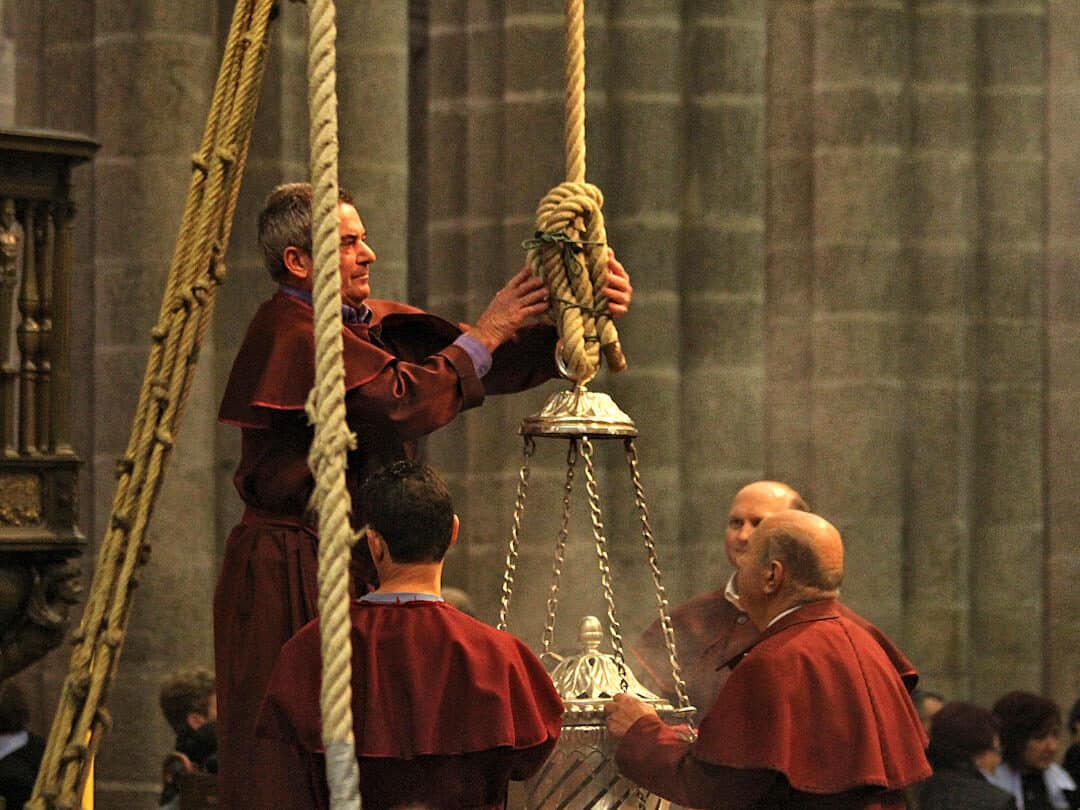
If your arrival in Santiago de Compostela coincides with a religious holiday, you may be able to witness the Botafumeiro | Image courtesy of Contando Estrelas on Wikimedia Commons
Tip 2: Pay your respects to St James
We arrived in Santiago de Compostela just before Easter with what felt like thousands of other pilgrims. The queue to enter the Cathedral of Santiago de Compostela [Google Maps location] was ridiculously long. Thankfully, we were in Santiago for a few days. On Easter Monday, we returned to the Cathedral when it opened, and hardly anyone was there. We were able to take our time at St James’ tomb, write a thank you note, light a candle, stand and kneel in quiet contemplation without feeling rushed.
It was a cathartic experience for me: It seemed all the weight I had been carrying on my shoulders since Paul’s accident (figuratively and literally) finally came off. I couldn’t help it: My tears just started rolling… Out of gratitude (that we made it). Out of exhaustion (having tried my best to keep it all together for the previous 8 months). And out of sadness (that our first Camino experience was about to end).
When we left the tomb, a small queue had started to form at the staircase leading up to the statue of St James at the main altar. We joined the queue to fulfil the pilgrim’s ritual of embracing the Apostle, but touching the cold metal of the statue didn’t quite induce the same feelings as being at St James’ tomb.
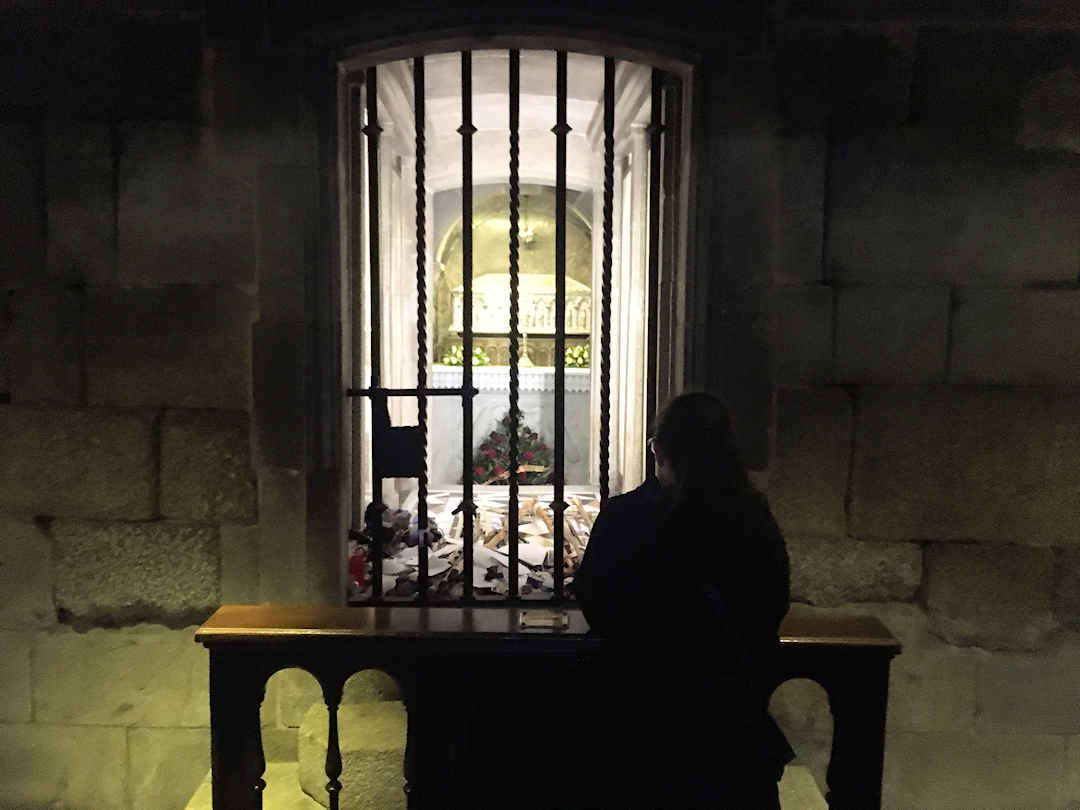
Go early when the Cathedral opens to have time for quiet contemplation at the tomb of St James
Tip 3: Reflect on your Camino
It is so important to take time to reflect upon and digest your Camino experience. Everyone who has walked it says the Camino changes you, and it does, in all sorts of different ways.
“Ultimately, a pilgrimage begins and ends in one’s own heart” (Dalai Lama)
I found it hugely helpful to write my thoughts down as we walked… daily: How easy or difficult was this stage? What pain or discomfort did I encounter? What did I see? Whom did I meet? What did I enjoy (or dislike)? What did this stage teach me?
Once in Santiago, review your notes, reminisce and consider what you want to incorporate into your everyday life. Are there any changes you want to make? If so, what steps do you have to take to make those changes?
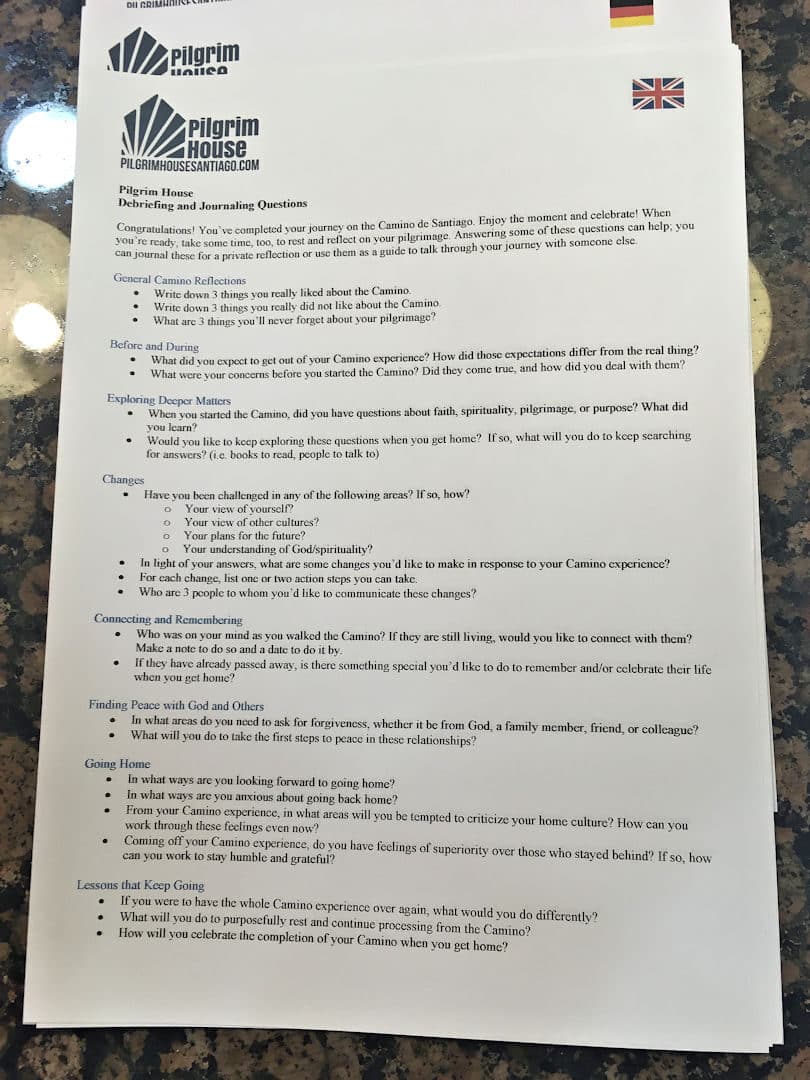
If you're looking for some structure to help digest your Camino experience give these debrief notes a try
If you find it difficult to reflect upon/digest your Camino experience independently, you can get assistance, especially once in Santiago.
For one, there is the Pilgrim Lounge at the Pilgrim’s Reception Office (take the stairs one floor up after you receive your Compostela) [Google Maps location]. Staffed by volunteers who’ve walked the Camino themselves, the lounge is a place where you can have a cup of tea and chat as much or as little about your Camino experience as you like. There are lounges for different nationalities/languages: German, English, Dutch… But you can go to any of them, and they will welcome you with open arms.
Secondly, the Pilgrim House [Google Maps location] is a Christian not-for-profit. It provides debrief notes in various languages. You can also join the group and/or private debrief sessions, as well as reflective meditation sessions. The Pilgrim House offers quiet spaces for personal reflection (excellent if your Albergue is too busy), a communal lounge and kitchen to meet fellow pilgrims, and a laundry and luggage storage service.

There are Pilgrim Lounges above the Pilgrim's Reception Office where you can talk about your Camino experience
Tip 4: Learn about the Camino/s and Santiago at the Pilgrimage Museum
Right next to the Cathedral at Praza das Praterías (with the Fountain of the Horses) is the Museo das Peregrinacións [Google Maps location]. Over several floors, you can learn more about the famous pilgrimages worldwide, especially the Camino de Santiago, what it was like for the early pilgrims and the history of Santiago de Compostela.
Through the rooftop windows, you get a close-up view of the Cathedral towers. There was even an exhibition about the Kumano Kodo in Japan (which we also ended up doing).
And if you’re still keen to learn more, why not join a free walking tour or one of these?
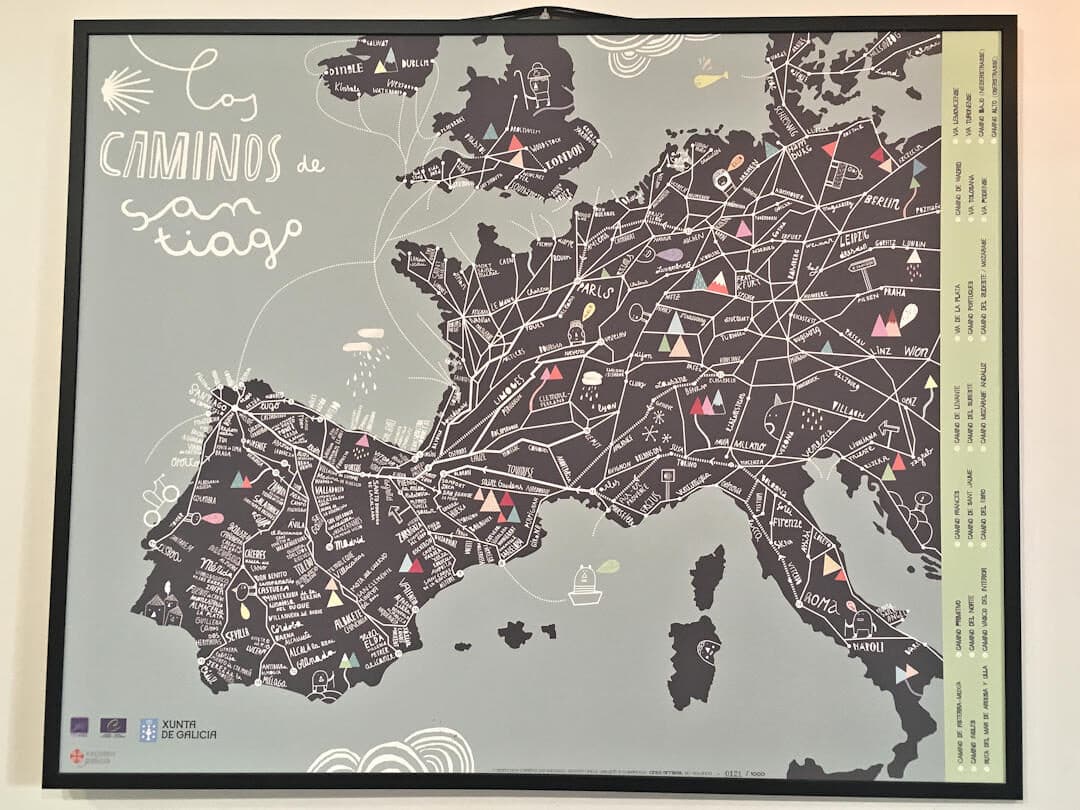
Learning what it was like for the millions of pilgrims before us at the Pilgrims Museum was a very humbling experience
Tip 5: Continue to Finisterre and/or Muxía
Did you know that KM-0 is not in Santiago but in Finisterre [Google Maps location]? If you don’t want to stop walking (just yet), you can continue your Camino for a few more days to Finisterre or Muxía (or both).
If you don’t want to walk it (or don’t have the time) you can still visit both: on a day trip by bus. While not quite the same as walking it, standing at KM-0, overlooking the sea from the Cape behind the Lighthouse (Faro de Fisterra) or watching the waves crash into the rocks in front of the Church of Nuestra Señora de la Barca in Muxía are very special moments.
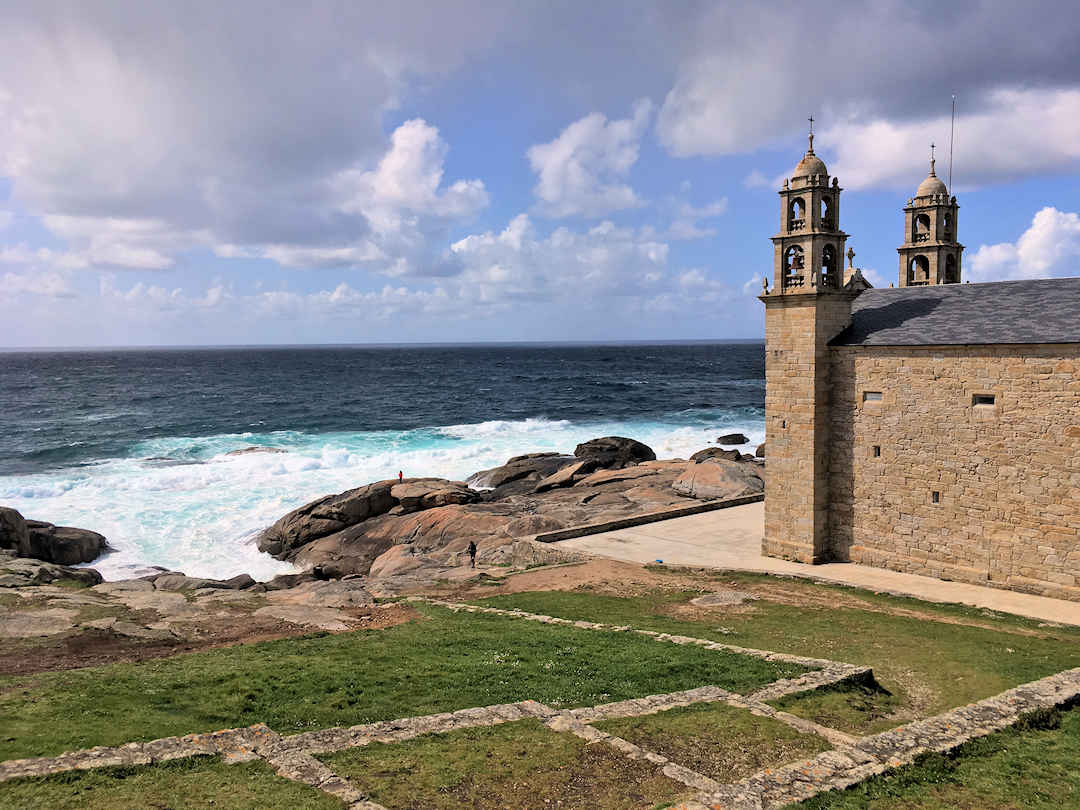
Visit the Church of Nuestra Señora de la Barca in Muxía and/or Kilometre-0 and the Lighthouse in Finisterre
Tip 6: Reward yourself with a post-pilgrimage massage
Also by the Cathedral in Santiago, just off Praza do Obradoiro, is a massage practice. Quintana Massages at Spazio Wellness [Google Maps location] is open daily from 09:00 to 21:00. The one-hour whole-body massage was the perfect ending to our Camino, loosening up our tight back, leg and foot muscles before we embarked on our next adventure. You can book your spot online.
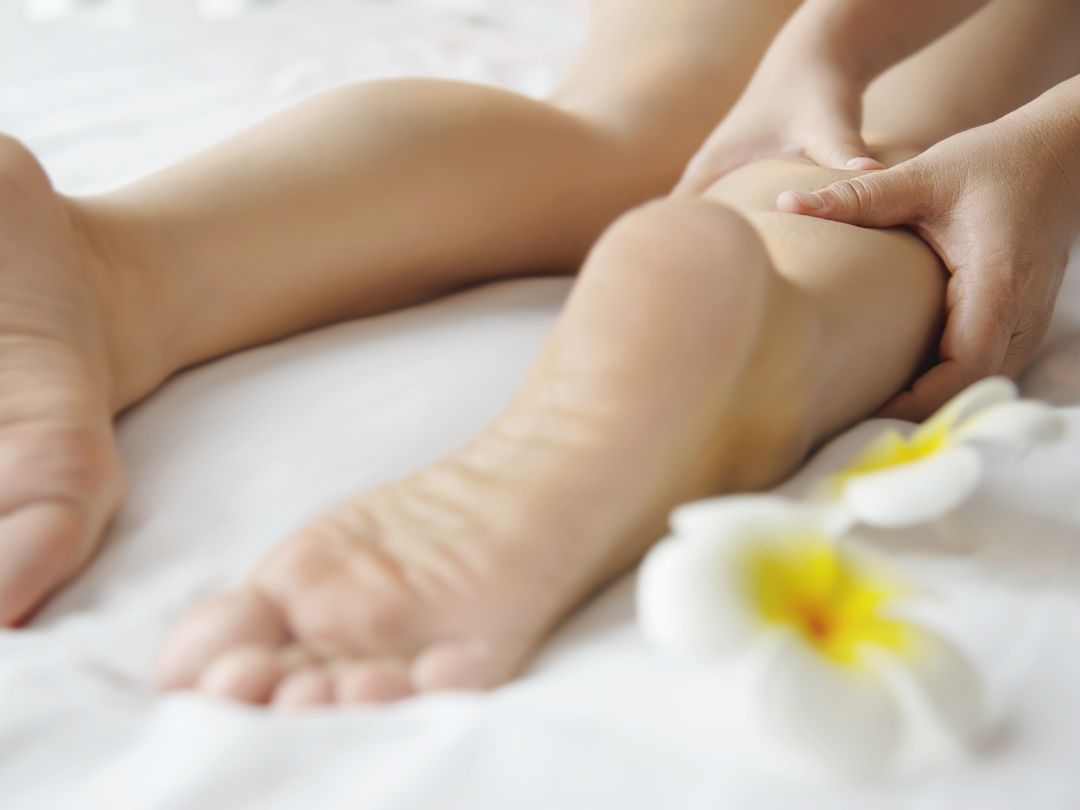
Loosen your tight muscles after walking the Camino with a relaxing massage
Around the world in 80+ travel movies
Looking for travel inspiration? Why not turn to the big screen? Movies can transport us to different places, spark our wanderlust and make us dream of new adventures. And with 80+ films to choose from, covering classics and hidden gems worldwide, you will be planning your next adventure in no time.
Where to stay in Santiago de Compostela?
After paying for albergues on the Camino, accommodation costs in Santiago de Compostela may be another shock to the system. If you’re looking for affordable options close to the city centre, here are our recommendations:
| Name | Property Features | Type | Price Indicator | Book Now |
|---|---|---|---|---|
| Apartamento Gallaecia Lux | Quality Rating: 3/5 based on factors such as facilities, size, location and services provided. 24-hour front desk | Dormitory | $$$$ | Book Now |
| Apartamentos Aurelia Antica | Quality Rating: 3/5 based on factors such as facilities, size, location and services provided. | Dormitory | $$$$ | Book Now |
| Blue Home | Quality Rating: 3/5 based on factors such as facilities, size, location and services provided. Environmental practices in place. | Apartment | $$$ | Book Now |
| Hotel Atalaia B and B | Environmental practices in place. Part of Booking.com Preferred Partner Program | Apartment | $$ | Book Now |
| Santiago KM-0 | Facilities for disabled guests Bar | Dormitory | $$ | Book Now |
| Hotel San Miguel | Environmental practices in place. Facilities for disabled guests | Hotel | $$ | Book Now |
| Yellow Home | Environmental practices in place. Quality Rating: 3/5 based on factors such as facilities, size, location and services provided. | Apartment | $$$ | Book Now |
Where to eat in Santiago de Compostela?
Right in the middle of it all, on Rúa das Carretas (the same street as the Pilgrim’s Reception Office), we had great pilgrim’s lunches at Restaurante Tarará [Google Maps location] for just under EUR13.
Another good spot, whether to stop and eat lunch or buy fresh produce, is the Mercado de Abastos [Google Maps location]. We stocked up there with fresh fish, locally made cheese, veggies and pastries (and cooked at our accommodation).
If you want to learn about or just taste delicious Galician food, consider booking one of these gastronomical tours:
What was your first Camino experience like?
And what other tips to ease the (re)adjustment process would you add? Please let us know.
Before you go, if you liked our article and found it helpful, we would appreciate it if you could share it with your friends and family via the Share buttons below. Even better: Leave a short review on Trustpilot or Google, which would help us further build our online reputation as a (trustworthy and helpful) travel and lifestyle blog.

